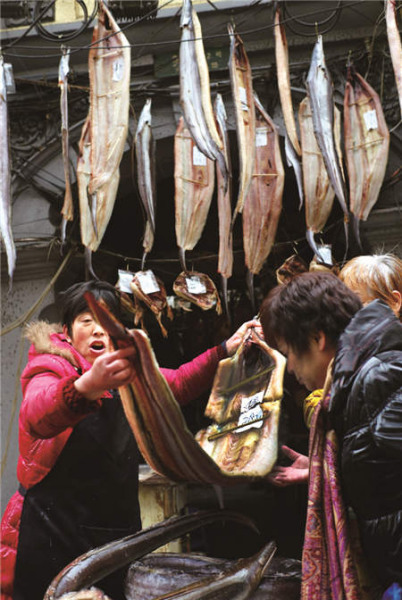
Looking back, the food that people are able to enjoy today during the Chinese New Year can be considered a luxury. Decades ago, when China had adopted the planned economy policy, certain food products were rationed and could only be purchased with coupons.
"Before the Spring Festival, you could only get eggs by exchanging them with coupons. They were distributed based on the size of the family," shares Cai, who also said that housewives during those times were forced to make the most of what was available to them.
"Generally speaking, one chicken, one duck and some pork were made allocated to a family for the festival. As these meats are available only once a year, people would cherish the broths that were made with them, usually combining them to cook soup that the family can enjoy for as long as three or four days during the festival," says Cai.
The Chinese New Year cake made from glutinous rice, also known as niangao, was another item that was only available during the festival. One ritual on the eve of the Chinese New Year was queuing to have a vendor transform the dry slices of rice into small puffy tubes with his machine.
"One main reason for the popularity of this dish was that people liked seeing the little slices grow. This transformation was some-thing that people found interesting during an age of material deprivation. The queues to the niangao stalls didn't disappear until after the New Year count-down," says Cai.
Many people like Wang Yongyong have noted that Lunar New Year in the past was so much more significant given the restrictive circumstances. These days, how-ever, when all sorts of food products are easily available, the occasion has inherently lost a bit of its novelty.
Wang still recalls how she could only look on in envy when her aunt pampered her daughter with a bar of chocolate.
"Together with my three brothers, I could only watch her eat the chocolate. The people of today can never imagine how we used to crave delicious food we can't have," she says.


















































